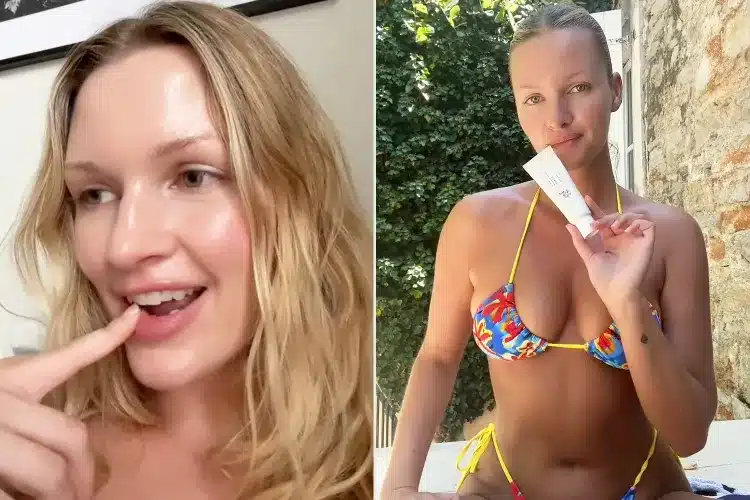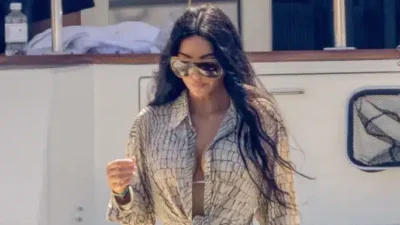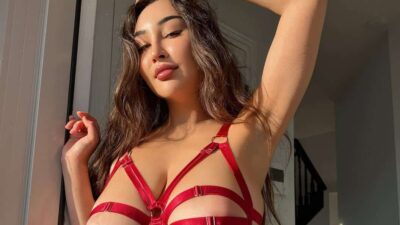After posting a TikTok about her encounter with an older woman who commented on her figure, Kate Kope opens up to PEOPLE about her experience as a size 8/10 model
NEED TO KNOW
- Curve model Kate Kope got over 300K views on TikTok for opening up about her encounter with an older woman who commented on her body during their flight
- Kope, 27, recalled the woman saying that she was “not that fat” after she found out Kope classified herself as a curve model
- Speaking with PEOPLE exclusively, Kope reveals why she “was not shocked” by the woman’s unfiltered reaction
“There’s nothing quite like getting humbled on your early morning @delta flight,” model Kate Kope wrote in a TikTok video recounting an awkward encounter she had with a fellow passenger en route to Los Angeles.
The video, which has garnered over 300,000 views, features the 27-year-old Brooklyn-based curve model recalling a moment when her seatmate reacted unexpectedly after learning about her profession. When shown a lingerie photo of Kope, the woman responded, “Oh, don’t worry, you’re not that fat.”
Speaking to PEOPLE, Kope — who is signed with Jag Models — said she wasn’t surprised by the comment. In fact, she noted, she hears similar reactions quite often.
“I’m used to people not knowing what to say when I tell them I’m a curve model,” Kope shared. She describes herself as a “true size 10,” although she fluctuates between sizes 8 and 14. Most curve model clothing samples, she adds, typically range from sizes 12 to 16.

“In person, I don’t fit many people’s idea of ‘curvy’ or ‘plus-size,’ so awkward comments are common,” she continued. “I think people are trying to comfort me, as if I’ve allowed the fashion industry to convince me I’m fat. So, I don’t take these inappropriate reactions personally.”
Kope reflected on how society’s skewed views of body image often show through in these interactions. “To many, fat equals bad and skinny equals good. These encounters say more about society’s obsession with thinness than they do about me. I’ve done the mental work, and I’m no longer chasing thinness as my ultimate goal.”
She doesn’t believe the woman — whom she noted was older — meant to be hurtful.
“We actually had a pretty interesting conversation about a lot of things,” Kope said. “Maybe I could’ve judged her more harshly, but I let it roll off my back. Honestly, I’m more disappointed when younger people make those comments, because I expect millennials and Gen Z to be more aware.”
Although Kope describes herself as a “confident” woman, she admits these moments still make her uncomfortable in public conversations about her career.
“I hesitate to tell strangers I’m a model,” she said. “If I just say ‘model,’ I get looks. If I say ‘curve’ or ‘plus,’ people often respond like it’s absurd. So, I live in this middle ground where either label brings judgment.”

The rise of plus-size and curve models such as Ashley Graham, Paloma Elsesser, Iskra Lawrence, Lauren Chan, Precious Lee, and Hunter McGrady has helped grow the conversation around body diversity in the fashion world.
Still, Kope — who’s modeled for top brands including Victoria’s Secret, SKIMS, Fenty Beauty, and Hollister — says she’s noticed a recent decline in visibility for models her size and above.
“A few years ago, it felt like curve models were gaining ground,” she explained. “My friends who are size 16 and up were landing campaigns, beauty shoots, editorials — it felt like progress. But now, those opportunities seem to be shrinking. Brands are casting smaller curve models or ones who are just midsize like me. My size 16+ friends are struggling to find work again.”
That’s why she’s committed to continuing the conversation on social media.
“Our perception of thinness is dangerously warped by the media we consume,” Kope said. “I shouldn’t be the largest body seen in campaigns. I shouldn’t be the only version of a ‘curvy’ woman shown.”
She added, “What’s helped me most is my community of plus-size models. They’re confident, stylish, brilliant, funny — the coolest people I know. If brands won’t spotlight them right now, then it’s up to us to seek them out and support them.”



